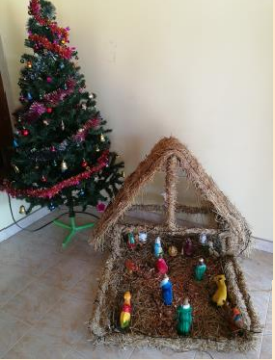The Portuguese Connection to Ceilão By Randika Jayakody and Jerome Perera
Source:Brisbane 4EB Sri Lankan Newsletter – Dæhæna – December 2021
The arrival of the Portuguese changed the culinary, ethnic, cultural, and linguistic landscape of Sri Lanka. The first wave of Portuguese seafarers arrived in 1505, and by 1640 Portuguese parishes and convents existed in Colombo, Galle and across the island.
The establishment of the Portuguese community in Sri Lanka promulgated Portuguese cultural traditions to the local population. This led to significant contributions which are evident in the formation of the creole language and culture that now forms an intrinsic part of the lives of all Sri Lankans.

An openness to ethnic intermixing with the local communities on the island produced a vast number of Mestizos, or mixed people. A result of this extensive intermixing is evident in the proliferation of Portuguese names such as Don, Singno, Dona, and Siciliana and surnames such as Fernando, Perera, Gomes, Costa, and De Silva throughout the
Lankan community.
For approximately 350 years, Sri Lankan Portuguese Creole, a language still spoken by Sri Lankan Portuguese community and Ceylon Africans was the lingua franca of the island. This language allowed disparate communities to communicate, trade, and interact as well as to intermarry and share culture. The resultant influence on the Sinhalese language is a long list of loanwords from Portuguese. Examples such as bankuva, Mesa, janelaya, kasade, soldaduva, and Naththal (Christmas), and even “Oi”, amongst hundreds of others have enriched local languages.
The infectiously dance inducing music of Baila was developed from Portuguese contact with local communities. It is during such contact that Afro Ceylonese rhythms, Malay rabane drums, and Portuguese guitars and violins combined with Sinhalese and Tamil languages which gave rise to this truly Lankan musical tradition.
Through communal contact, Portuguese nuns and bakers introduced bread (paan), banis, cakes such as love cake and Christmas cake, empanadas (pattis) and cutlets. Sweets such as wiskirinya and puhul dosi as well as produce such as cashews and chillies are contemporarily eaten by all Lankans.
Then there is Beeralu lace making, poetry, Naththal and wedding celebration and a plethora of cultural traditions so intertwined within society that they are immediately recognisable as Lankan. Presently, the Sri Lankan Portuguese community preserves language and culture with assistance from the University of Lisbon. You may find our shared language, music, recipes, and interviews on the International Endangered Languages archive.
In true Portuguese Lankan tradition, we would like to wish Feliz Natthal and happy New Year to all our readers.
 Randika Jayakody and Jerome Perera
Randika Jayakody and Jerome Perera
Among Randika and Jerome’s many interests is a
deep passion to understand Sri Lankan history and
culture. This has been facilitated through exposure to
multiculturalism through their travels and living
Radio 4







